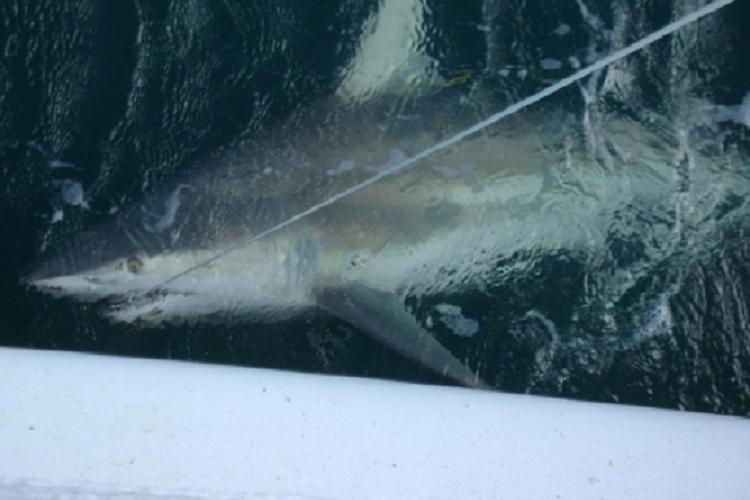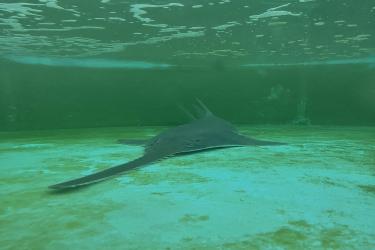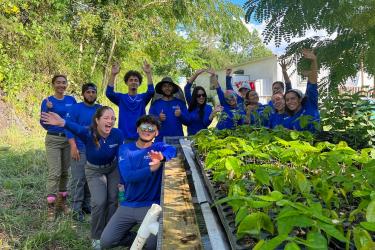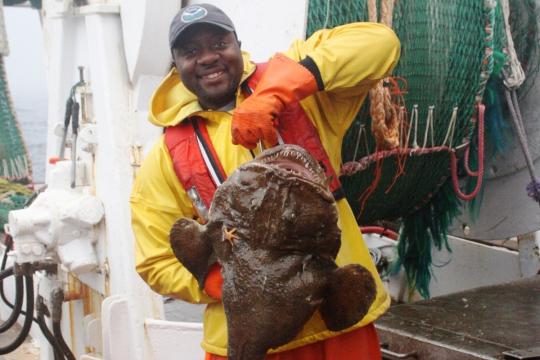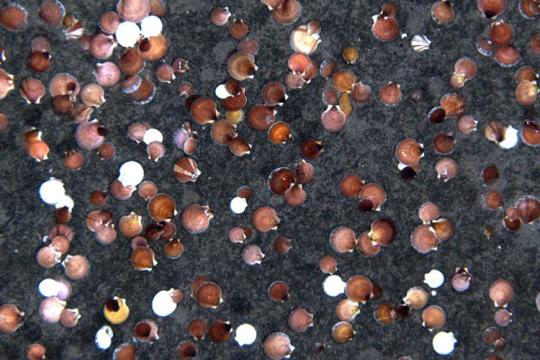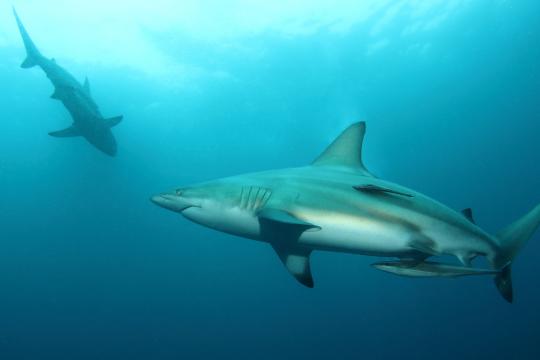The proposed 2019 quotas, adjusted as appropriate to account for over- and underharvests, are summarized in the table below by management group. Adjustments based on over- and underharvests depend on stock status. The proposed rule uses landings data received as of July 13, 2018. The final rule will be based on updated data received in dealer reports as of October 2018. Thus, the quotas in the proposed rule are subject to change in the final rule. All dealer reports that are received after the date of the final rule will be used to adjust the 2019 quotas, as appropriate.
This action could affect:
- Any commercial shark fishermen in the northwestern Atlantic Ocean, including the Gulf of Mexico and Caribbean Sea.
- Any dealers who buy or sell sharks or shark products in these areas.
The proposed adjusted quotas, retention limits, and opening dates are:
|
Region or Sub-region |
Management Group |
2019 Annual Adjusted Quota* |
Quota Linkages |
Commercial Retention Limits for Directed Shark Limited Access Permit Holders (inseason adjustments are possible) |
Opening Dates |
|---|---|---|---|---|---|
|
Western Gulf of Mexico |
Blacktip Sharks |
265.6 mt dw (586,662 lb dw)** |
Not Linked |
36 large coastal sharks other than sandbar sharks per vessel per trip |
January 1, 2019 |
|
Western Gulf of Mexico |
Aggregated Large Coastal Sharks |
72.0 mt dw (158,724 lb dw) |
Linked |
36 large coastal sharks other than sandbar sharks per vessel per trip |
January 1, 2019 |
|
Western Gulf of Mexico |
Hammerhead Sharks |
11.9 mt dw (26,301 lb dw) |
Linked |
36 large coastal sharks other than sandbar sharks per vessel per trip |
January 1, 2019 |
|
Eastern Gulf of Mexico |
Blacktip Sharks |
28.9 mt dw (63,740 lb dw)** |
Not Linked |
36 large coastal sharks other than sandbar sharks per vessel per trip. NMFS anticipates an inseason increase to 50 large coastal sharks other than sandbar sharks per vessel per trip around April 1, 2019 |
January 1, 2019 |
|
Eastern Gulf of Mexico |
Aggregated Large Coastal Sharks |
85.5 mt dw (188,593 lb dw) |
Linked |
36 large coastal sharks other than sandbar sharks per vessel per trip. NMFS anticipates an inseason increase to 50 large coastal sharks other than sandbar sharks per vessel per trip around April 1, 2019 |
January 1, 2019 |
|
Eastern Gulf of Mexico |
Hammerhead Sharks |
13.4 mt dw (29,421 lb dw) |
Linked |
36 large coastal sharks other than sandbar sharks per vessel per trip. NMFS anticipates an inseason increase to 50 large coastal sharks other than sandbar sharks per vessel per trip around April 1, 2019 |
January 1, 2019 |
|
Gulf of Mexico |
Non-Blacknose Small Coastal Sharks |
112.6 mt dw (248,215 lb dw) |
Not Linked |
N/A |
January 1, 2019 |
|
Gulf of Mexico |
Smoothhound Sharks |
504.6 mt dw (1,112,441 lb dw)** |
Not Linked |
N/A |
January 1, 2019 |
|
Atlantic |
Aggregated Large Coastal Sharks |
168.9 mt dw (372,552 lb dw) |
Linked |
25 large coastal sharks other than sandbar sharks per vessel per trip. If quota is landed too quickly (e.g. if approximately 20 percent of quota is caught at the beginning of the year), NMFS anticipates inseason reduction (e.g. to 3 or fewer large coastal sharks other than sandbar sharks per vessel per trip), then an inseason increase to 36 large coastal sharks other than sandbar sharks per vessel per trip around July 15, 2019 |
January 1, 2019
|
|
Atlantic |
Hammerhead Sharks |
27.1 mt dw (59,736 lb dw) |
Linked |
25 large coastal sharks other than sandbar sharks per vessel per trip. If quota is landed too quickly (e.g. if approximately 20 percent of quota is caught at the beginning of the year), NMFS anticipates inseason reduction (e.g. to 3 or fewer large coastal sharks other than sandbar sharks per vessel per trip), then an inseason increase to 36 large coastal sharks other than sandbar sharks per vessel per trip around July 15, 2019 |
January 1, 2019
|
|
Atlantic |
Non-Blacknose Small Coastal Sharks |
264.1 mt dw (582,333 lb dw) |
Linked (South of 34° N. lat. only) |
N/A |
January 1, 2019 |
|
Atlantic |
Blacknose Sharks (South of 34° N. lat. only) |
17.2 mt dw (37,921 lb dw) |
Linked (South of 34° N. lat. only) |
8 Blacknose sharks per vessel per trip (applies to directed and incidental permit holders) |
January 1, 2019 |
|
Atlantic |
Smoothhound Sharks |
1,802.6 mt dw (3,973,902 lb dw)** |
Not Linked |
N/A |
January 1, 2019 |
|
No regional quotas |
Non-Sandbar LCS Research |
50.0 mt dw (110,230 lb dw) |
Linked |
N/A |
January 1, 2019 |
|
No regional quotas |
Sandbar Shark Research |
90.7 mt dw (199,943 lb dw) |
Linked |
N/A |
January 1, 2019 |
|
No regional quotas |
Blue Sharks |
273.0 mt dw (601,856 lb dw) |
Not Linked |
N/A |
January 1, 2019 |
|
No regional quotas |
Porbeagle Sharks |
1.7 mt dw (3,748 lb dw) |
Not Linked |
N/A |
January 1, 2019 |
|
No regional quotas |
Pelagic Sharks Other Than Porbeagle or Blue |
488.0 mt dw (1,075,856 lb dw) |
Not Linked |
N/A |
January 1, 2019 |
Submit Comments by October 11, 2018:
Written comments, identified by “NOAA-NMFS-2018-0097”, may be submitted electronically on the Federal eRulemaking Portal or sent by fax or mail to the contact information included below. All comments received are a part of the public record and will generally be posted to regulations.gov without change. All Personal Identifying Information (for example, name, address, etc.) voluntarily submitted by the commenter may be publicly accessible. Do not submit Confidential Business Information or otherwise sensitive or protected information. NOAA Fisheries will accept anonymous comments (enter N/A to remain anonymous). You may submit attachments to electronic comments in Microsoft Word, Excel, WordPerfect, or Adobe PDF file formats only.
Copies of these documents are available upon request from the Highly Migratory Species Management Division, 1315 East-West Highway, Silver Spring, MD 20910 (phone: 301-427-8503, fax: 301-713-1917). For more information contact Lauren Latchford at 301-427-8503.
